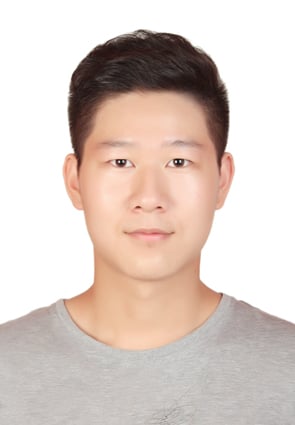
EDUCATION
Tian Gong University, Tianjin, China (Double First-Rate University)
Mechatronic Engineering Sept. 2016 ~ Sept. 2020
EXPERIENCE
China Engineering Robot Competition, Wuhan, China September 2018 [1]
Team Leader, Win the 2nd Prize
• Responsible for the competition planning and organizing, and facilitated networking and collaboration among the team members
• Responsible for writing and debugging of the robot program
University Robot Competition of Five Province in North China, Tianjin, China October 2017 [2]
Team Member, Win the 2nd Prize of Tianjin Competition Area
• Responsible for writing robot program with team members
• Responsible for robot debugging, adjusting robot action and mechanical arm position
• Responsible for robot maintenance and repair
PROJECT
• 2019.6 Participated in the Internet Innovation and Entrepreneurship Competition (University Class)
The project is a hotel management robot. The basic function of the robot is to guide guests to their rooms, and at the same time, they can help guests with luggage. In order to achieve this function, the robot needs to have the following capabilities: automatic wayfinding, tracking and locating customers. The basic form of the robot is a movable chassis. In this project, the robot chassis directly uses a commercial product named DashGo D1 [3].
1. Realization of automatic path finding function
First, the robot is equipped with the ROS (Robot Operating System) [4] open source system. Basic operations such as movement, receiving and sending signals are implemented by various functional packages of ROS. The robot chassis is equipped with a lidar. Use lidar to build a map of the indoor environment, and use the Slam navigation module for navigation (mainly using the functions that come with commercial products).
2. Locate and track guest location
First of all, the robot is equipped with a router, which can use WiFi to communicate with mobile phones and PCs. The control center of the tracking module is the Raspberry Pi. The sensor is a Kinect camera [5]. Because of the color module and the depth camera, it can track the same object and measure the distance at the same time.
Human object detection is based on Google's open source TensorFlow, an open source software framework for high-performance numerical computing.TensorFlow's internal functionality is based on graphs. By using the deep neural network model that has been trained on the Internet, we can build our own human body detector, the tracking accuracy is improved.
After confirming that the object is detected by the detector was the guest of this task, the guest was tracked using the Kernel Correlation Filtering algorithm (KCF). Aiming at the problem that KCF algorithm is difficult to deal with target occlusion, a moving target tracking algorithm based on improved kernel correlation filtering is proposed. The Kalman filter is combined to predict the position of the character target in the next frame, combined with the occlusion judgment, when the target is occluded, the model update of the KCF algorithm is stopped, and the predicted position of the Kalman filter is used for tracking, when the target returns to the field of view, continue to use the KCF algorithm for tracking.
My main responsibility is the motion control part of the robot, for example, control robot through ROS. I have a basic understanding of the algorithm part, but that is not my main responsible part.
AWARDS
• 2019.12: Won the President Scholarship (University-class)
SKILLS
Microsoft – Word, Excel, PowerPoint, MATLAB, C-language
Drawing software: Auto CAD and Sketch Up; Solidworks
LANGUAGE
Chinese (Native); English (IELTS6.5, R8.5, L6.0, S6.0, W6.0; 10/2019)
Relevant Website
[2] http://www.xinhuanet.com/politics/2017-11/14/c_129739787.htm
[3] This website is blocked by Appropedia. Please go to aliexpress website and search for the product.